Rainy Days and Mundis: Episode 4
By Mento 0 Comments
It's the fourth episode of our in-depth study of the H.O.P.A. (Hidden Object Puzzle Adventure) genre and boy are my arms tired. From pointing at things that are hidden. I... may have bought more HOPAs. They were in a dollar bundle, and I'm only human. However, they weren't Artifex Mundi brand HOPAs, which means they won't be making an appearance here (I'd have to change the feature's name first). Instead, this week's edition of Rainy Days and Mundis checks out our first sequel installment - Grim Legends 2: Song of the Dark Swan, the follow-up to the first game we ever covered on this feature.
My slightly specious reasoning for this selection follows thusly: We've bounced between other settings and other developers looking for significant changes to the HOPA formula, but as a direct sequel Artifex Mundi - who occupy both developer and publisher roles here - has a task to perform in creating something distinct from the original product. Obviously, there'll be some similarities to signify that they belong to the same little series of high fantasy point-and-click hidden object games, but the onus is on them to expand and evolve on the original's ideas. That's generally how video game sequels work: add new features, be bigger, be more confident, but don't lose track of the core appeal of the inaugural piece of media, the success of which allowed the sequel to happen. We'll see how that theory pans out in just a moment.
First, some episode links:
- Episode 1: Grim Legends: The Forsaken Bride
- Episode 2: The Myth Seekers: The Legacy of Vulcan
- Episode 3: Tiny Tales: Heart of the Forest
Episode 4: Grim Legends 2: Song of the Dark Swan
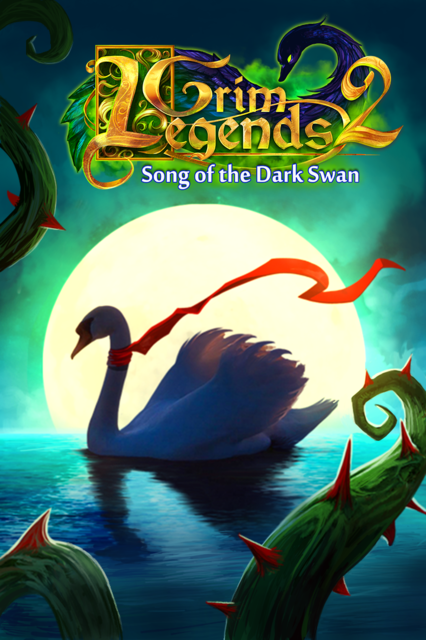
OK, so remember last time where I said I would start tracking the inventory puzzles? I was bluffing. There's no way to do that in a format that would make for compelling reading (I'm struggling enough as it is), but suffice it to say that at least half the sleuthing in the game involves finding a random object, usually as a reward from a hidden object puzzle, and figuring out where it goes. Frequently, you're tasked with finding multiple copies of the same basic object in order to complete a different puzzle - say, locating five missing tiles before you can start a sliding blocks puzzle which opens up the next area - while other times you're looking for multiple ingredients or components to combine into one useful item. Standard point-and-click inventory item business, just a whole lot more of it than is usual for the adventure genre.
What I find odd, and this might have something to do with the fact that every NPC talks in a really unsettling animated fashion, is that there's been very little in the way of dialogue puzzles in these games. Most graphic adventure games of old split their time between you wandering around in a daze using everything on everything to figure out the path of obtuse logic behind the game's inventory puzzles, and the other half spent talking to NPCs, with the game squeezing in as much exposition or humor as desired from a talented voice actor crew embodying some colorful eccentrics. Another possibility for why this is the case occurred to me this week after noticing some of the strong accents of the child voice actors (an issue I believe plagued Heavy Rain also, with Ethan's incongruously French kids): dialogue is a tricky thing to emphasize when you're developing games in an non-Anglophone country like Poland, in part because the costs to localize all over the world aren't insignificant for a smaller studio, and also because you can't easily convince (or get away with having) Bill from Accounting to lend a few terse, growly lines as the enigmatic gardener for one scene if you suddenly decide to craft an entire dialogue tree with dead ends and optimal paths for that character.
Song of the Dark Swan, which contains no singing, concerns the wife of the Eagle King (it's just a name - these aren't all bird people. Well, mostly) who has taken ill after giving birth to the Eagle King's son and heir. While the protagonist, a healer employed by the King, attends to her, a shadowy figure steals her child away with dark magics, the use of which is forbidden in the Eagle Kingdom because it once destroyed the neighboring Swan Kingdom. The Queen's convicted of witchcraft after more dark magic artifacts are found in her chambers, but the King's not convinced of her guilt and sends you off to find answers in his stead. This eventually leads to discovering a conspiracy behind what exactly happened to the Swan Kingdom, the whereabouts of its many royal heirs who were scattered after its destruction, the motivations of the party who stole the child, and other spoilery business. Your character is never named (the default profile name is "Healer"), which makes me wonder if it's the same heroine from the first game incognito: she was well on the way to learning the arts of alchemy when that game concluded. Maybe that's just seeing canon where there is none. What with the rich tapestry of world-building that these games inspire and all.
At any rate, we have some now-requisite puzzle breakdown statistics:
- Of the 63 puzzles I observed (there's always the possibility I missed one or two), approximately half of those (31) were hidden object puzzles. From that number, we have thirteen hidden object puzzles where the goal was to locate multiple instances of one or two types of object (e.g. twelve coins hidden in an image), eight puzzles where you're given multiple pieces of a single object that is automatically built upon completion (they tend to be metallic shards and gems of some elaborate piece of jewelry used as a key), five puzzles where you're given a verbal list of objects (the "standard" hidden object format), and three each of story-based puzzles where you move objects around to complete a narrative, and a new format where each new object found opens the way to the next, making it almost like a series of micro inventory puzzles localized in one screen - so you'd find a key, use it to open a cupboard to get an eye jewel, add that to an empty-socketed statue above the cupboard for another key, and so on. Again, while the hidden object puzzles rule the roost here, there's some variation to keep them interesting.
- There's way more sliding block puzzles this time, to my disdain, easily making them the second-most populous puzzle variant. Three of them were the standard type: the one where you have a gap and must use it to move all the blocks around to their correct places. Two were of the much more grievous variety where you have to slide a "key" block from one side to another, moving various blocks out of its path. There were also two of the more merciful "switch" variety, where you can simply switch the places of any two adjacent tiles. That's eight in all, which may be a record for this feature; one I hope is never topped.
- There are three of what I call "Don't Cross the Streams" puzzles: the idea is that you form lines and connections that don't ever cross paths. There was exactly one of each type I've observed in the past: the first is where you have a grid of tiles and must draw lines between pairs without crossing; the second is where you have to visit every node on a board without hitting the same one twice; the third is where you have a set of knots with ropes connecting them, and must move the knots around so that none of the connecting ropes cross. The latter is the most difficult, as it was with Tiny Tales last time.
- Only two "Dominoes" puzzles this time, which are usually far more frequent. This involves moving various tiles around so that their adjacent tiles match - we have one case where you have to do that with colors, and a second with sets of runes. These are largely trial-and-error puzzles, so I wasn't exactly sad to see them diminished here, but it's unusual how we see the same puzzles occur in different relative quantities.
- A quick round-up of the standalone puzzle types: there were three cases where you had to follow a recipe to make a potion, including one where the order was oblique and you had to use logic to figure it out (in this case, you had instructions like "add this last but one" or "add this directly after this other ingredient"). There were three cases where you had to match patterns to their creators - a set of animal statues and their footprints, for instance. There was only one memory match game, another trial-and-error prone puzzle instance that is common elsewhere but doesn't get much play in these HOPA games. One regular maze (move a token to the exit using the right route) and two mazes where you had to create the route beforehand (say, by twisting a tile around to form a bridge). Two of those obnoxious switching puzzles where activating one node also activates the adjacent ones, and you're usually tasked with switching them all on or off. Two where you're moving sliders to fix an image, but made more complicated by how moving one slider can affect others - these are super common in Uncharted games, for whatever reason. There was exactly one jigsaw, one light refraction puzzle, one where you had to put a series of connected images in a chronological order, one puzzle where you had to determine the right path by the symbols on the walls, and a single game of "knights": the puzzle where you move a knight piece across a chess board to activate every square. I tend to call this the "HOPA puzzle sampler", where you get one or two instances of various common puzzle types per game to offset the sheer amount of hidden object nonsense it requires you to perform.
And now for the similarities/differences rundown:
- Female protagonist again, and another case of a nondescript playable character that is little more than a cipher. You do you, HOPAs.
- Just one type of collectible this time: a Caduceus (called a "healer sigil" in-game) hidden on almost every screen. Its curved serpentine shape doesn't help it stand out as much as you'd hope, and the game finds multiple ways of hiding them well. My favorite was when it hid the symbol in a group of winding vines; I think I found that one entirely by accident.
- I've noticed with almost all of these HOPAs so far that when you're done with a hotspot, it's no longer accessible. The exception is for those with collectibles or information (say, a book or scroll). This is greatly appreciated, as it minimizes the inventory puzzle confusion.
- I believe this is the third game now where I've had to braid a rope using a giant hoop. Is this a normal thing for people to know about? Ropes, naturally enough, have a multitude of uses in these adventure games, and they find several excuses to give you tough strands of vine or spiderweb silk with which to make them.
- I sometimes mock the developers for their grasp of English, but I think we've had almost one occasion per game so far where they've given me the name of an item that I've never heard of before, giving me a minor issue of not knowing what to do with it. This time it was a "windlass": which I discovered was a mechanical winch, in this case for a crossbow to help you wind the bowstring back. At least I'm learning something?
- The animal companions are back! Grim Legends 1 gave you an adorable kitten who stayed with you for the first half of the game. This time, you alternate between a sparrow, an otter, a woodland spirit, and the first sparrow again. The animals helped fetch items out of reach, while the spirit could grow or wither plants at your command. The game was kind enough to make your animal companions pipe up whenever they were needed.
- Probably goes without saying, but the interface was identical again, right down to the pictographs on the bottom left and right corners for the main menu, achievement/collectible overview, and hint system. As always, I'm too stoked that something of Legend Entertainment's point-and-click era survived to be bothered too much by the low-effort recycling.
- Differences this time? Well, besides the revelation that they can't get child actors to drop the strong Eastern European accents, I noticed that Grim Legends 2 might be the first to not have intra-inventory item combining. In previous games, certain inventory items would have a plus sign to indicate that you can combine them with another item, but that wasn't the case here. If you had to assemble an item from components, you needed to find a place to set that item down first: say, in an alchemy station for potion ingredients, or on a workbench for a multi-segmented tool. Otherwise, it's the same old shit. Still a compelling enough format in its own, breezy casual way though.
To finish, a shorter selection of demonstrative screenshots. I feel like these are becoming less and less necessary as we encounter the same recurring elements in game after game:
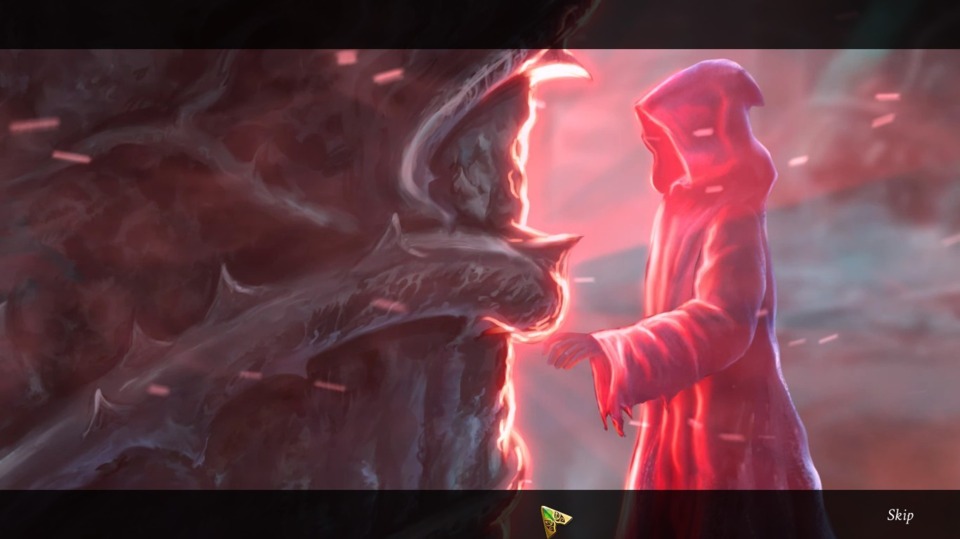
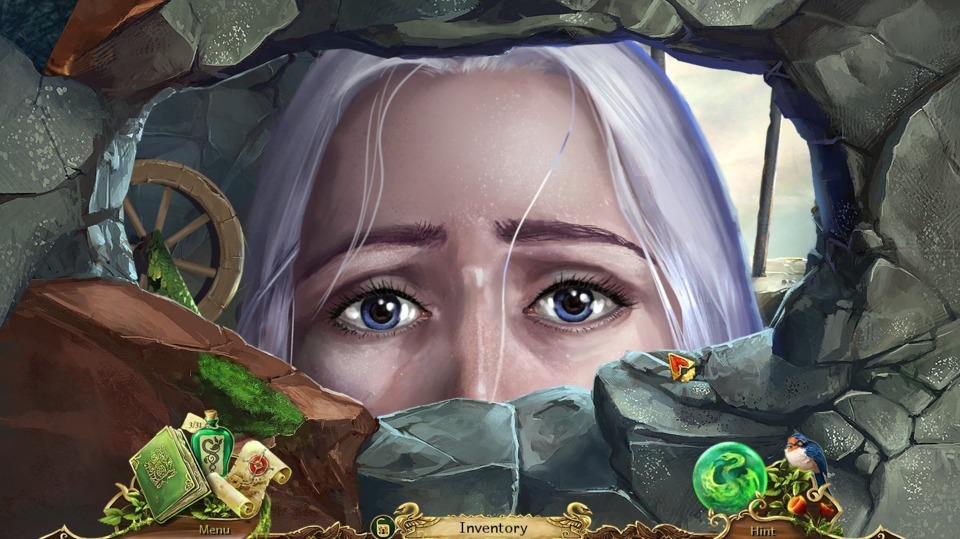
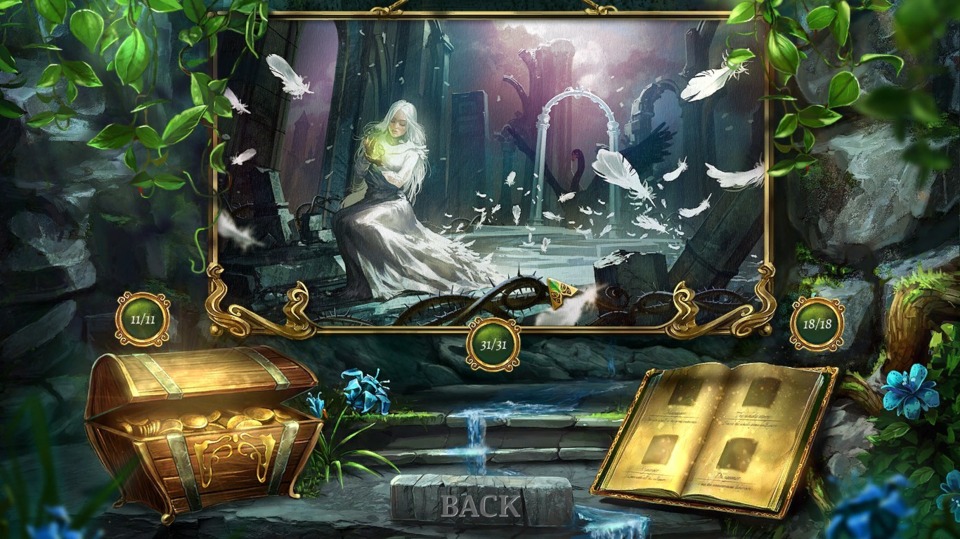
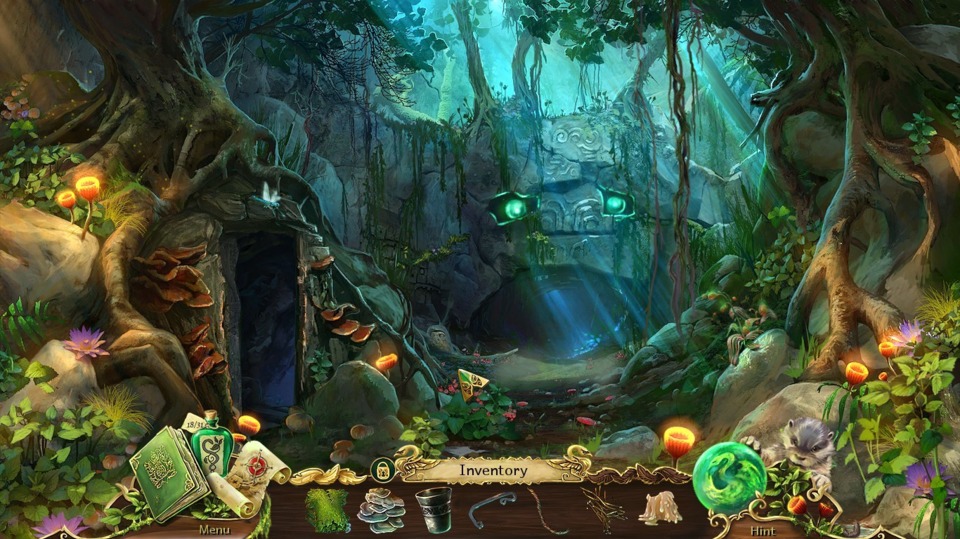
Next fortnight, we're switching developers again and looking at something a little... spookier? A few of these games have dabbled in horror and jumpscares, and I want to see if a more overt example of the genre can really bring the chills. Chances are, the first time it'll truly scare me is when it rolls out another of those sliding block key puzzles. Yikes.

0 Comments